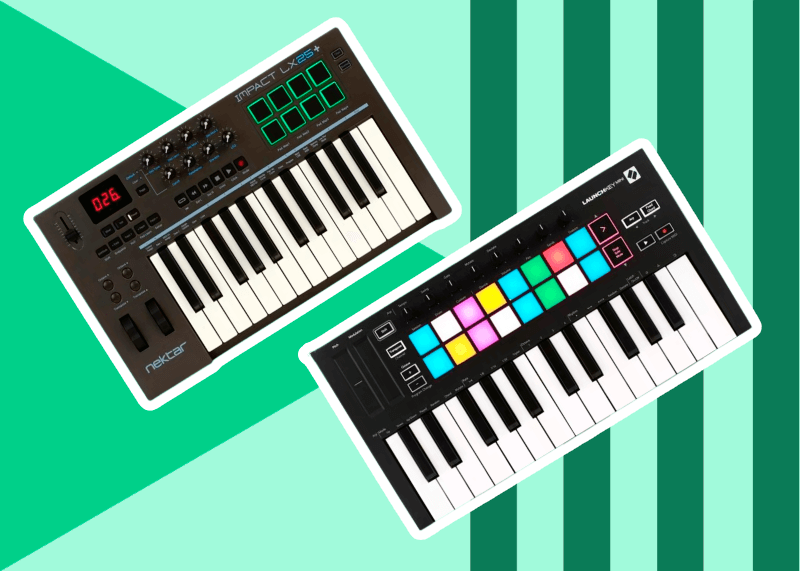
Getting great results from your GarageBand digital audio workstation isn’t something that’s guaranteed unless you have the right skills and top-tier MIDI equipment. That said, the best MIDI keyboard for GarageBand isn’t something you can buy without first knowing the potential benefits of all the options.
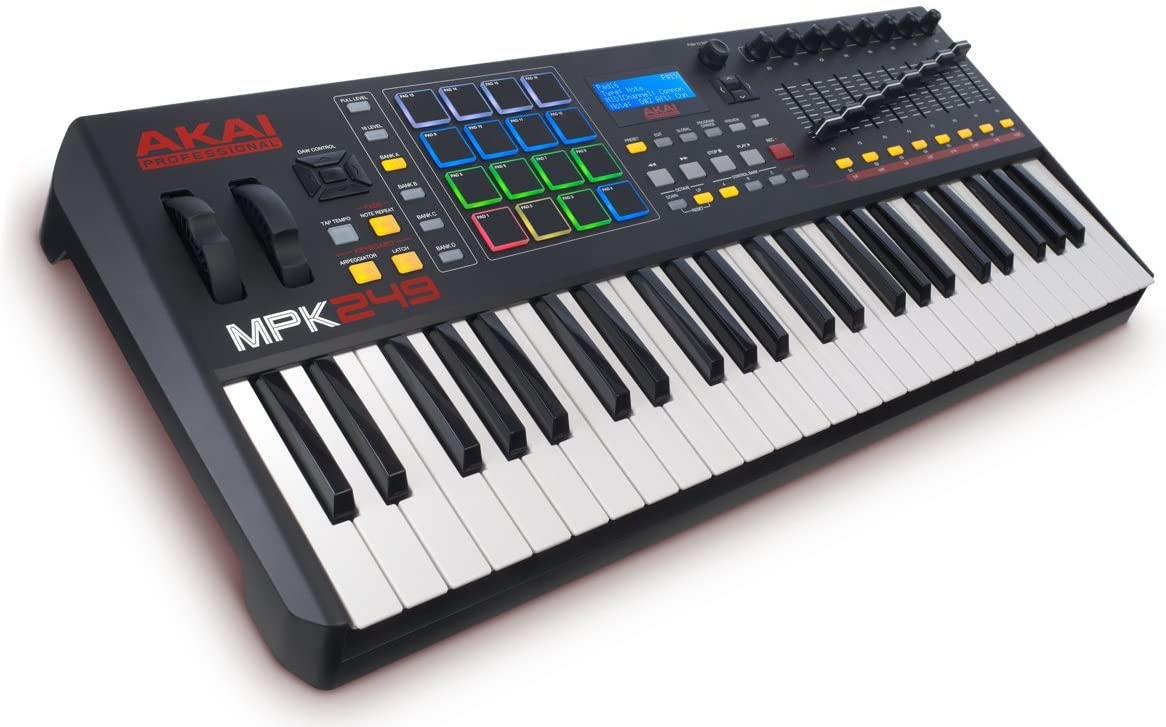

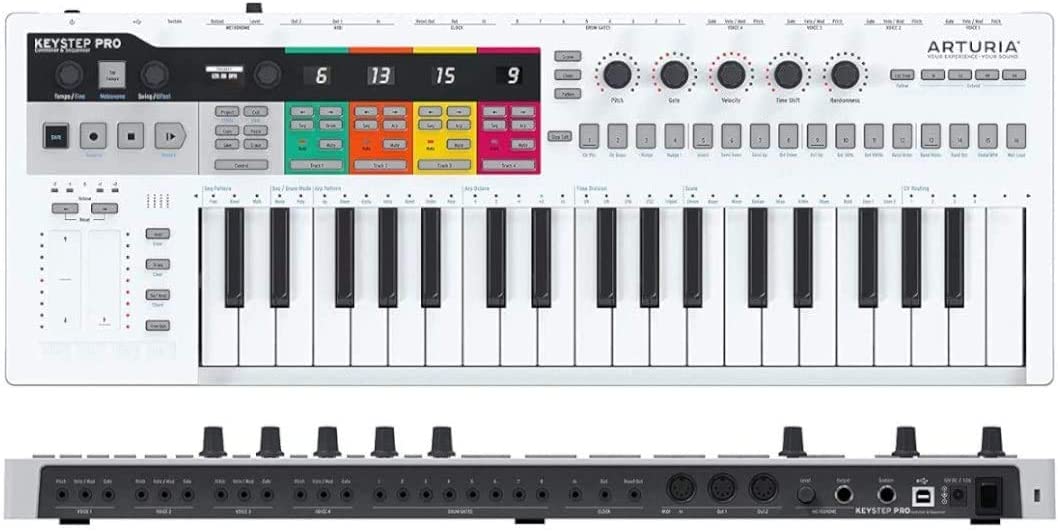



Familiarizing yourself with the features of each MIDI keyboard should help you figure this out. These features include MIDI in/out, DAW compatibility, software, the power source, keys, and other controllers.
Any one of the above features could be a source of positive vibes for you, or it could lead to headaches. As such, they’ve formed the review basis for the MIDI keyboard options we’ve mentioned below.
| № | Name | Rating | |
|---|---|---|---|
| 1 | Akai Professional MPK249 |
9,7
|
Check price |
| 2 | Arturia KeyStep Pro |
9,5
|
Check price |
| 3 | Alesis V49 |
9,2
|
Check price |
| 4 | Nektar IMPACT LX25+ |
9,0
|
Check price |
| 5 | Arturia MiniLab MkII 25 Slim-Key Controller |
8,9
|
Check price |
| 6 | Novation Launchkey Mini MK3 |
8,7
|
Check price |

Out of all USB midi keyboards for GarageBand listed, the Akai Professional MPK249 seems like the go-to option if you want premium features. That said, the keyboard is slightly pricey.
The keys take up a huge portion of the device, and their quality is top-notch. After all, they are semi-weighted which improves the feel and experience of pressing them. Also, there are 49 keys in total. While this may not give you the same experience as a full-size piano, it is still impressive in MIDI keyboard standards.
Additionally, your performances are bound to be more expressive since the keys are velocity-sensitive and provide aftertouch effects. Next, we look at the pads included, which are 16 in number. You might like that they are illuminated, although you’ll likely be more interested in their beat-making capabilities.
Since they are illuminated, the keys can give RGB feedback when pressed. Also, just like the keys, they are velocity-sensitive. After that, the assignable buttons are the next topic of praise. You can use your DAW to change the settings on these buttons depending on the type of music you’re trying to create.
The machine is bus-powered, and you can use a USB cord to connect it to a computer. Lastly, other ports are present on the device, including a MIDI in/out port and more.

Next, we have the Arturia KeyStep Pro, which is even pricier than the editor’s choice. The device is notably smaller and lighter than its predecessor on the list, which is excellent for mobile use situations. However, this also means the MIDI keyboard has 12 fewer keys.
Notably, the 37 keys included are slimmer than what you’d typically encounter in a full-size keyboard. As such, experienced players will need some time to get used to the size and design. That said, the keys seem to feature velocity and aftertouch sensitivity.
The four independent polyphonic sequencer tracks and the 24-part integrated drum sequencer are two other impressive attributes of this MIDI device. Also, you’re bound to love the connectivity options for the machine as several ports are included. You can connect synths, drum machines, a computer, and other devices you may need for your garage band’s music production.
Unfortunately for the pad lovers, none are included in the device. However, that doesn’t mean it is incapable of making beats or other complex functions. It is a MIDI device, after all. The machine is more performance than creation-oriented. For this reason, the size and weight make more sense.
As for powering the keyboard, you will need a free socket. Lastly, since Arturia is well-renown in music synthesis, it makes sense that the manufacturer has an in-house DAW interface included in the purchase. You can install it on your Apple devices to supplement the GarageBand DAW that you likely already have.

The Alesis V49 is the only other option apart from the editor’s choice device to have a 49-key setup. Notably, these are all synth-action keys that you can take full advantage of by pressing the octave up and down buttons. This should help you access the full range of the keys.
The controls on this MIDI keyboard include four assignable knobs and four assignable buttons as well. Owing to the size of the machines, this also means a relatively simple setup. That said, there should be eight pads included in the device as well.
Also, just like the previous offerings, you’re not limited to using the GarageBand software any time you sit down for a music production session. There are other pro-DAWs compatible with the machine, including the popular Ableton Live Lite 9.
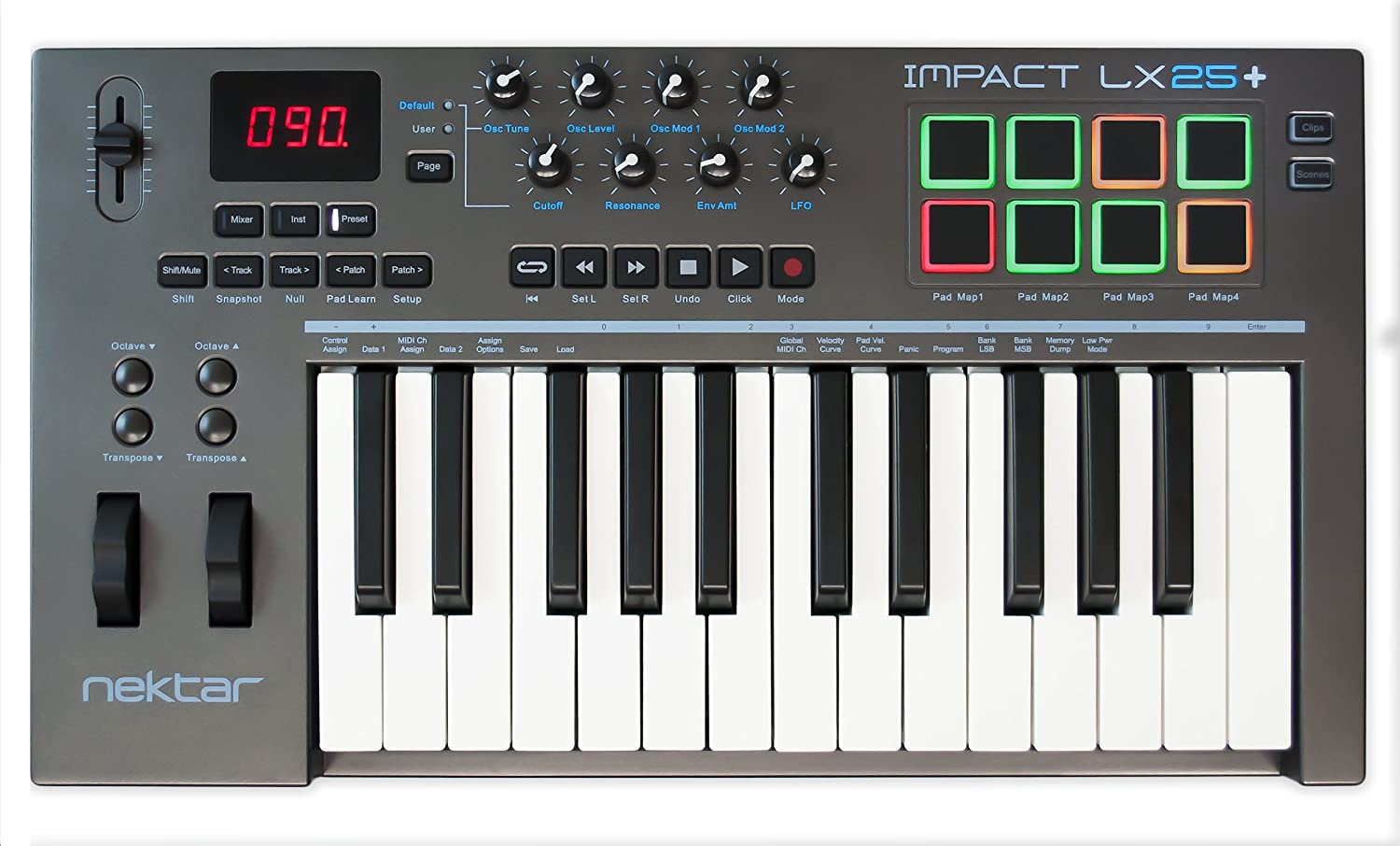
Our fourth pick is a 25-key bus-powered MIDI keyboard that you can get for a budget-friendly price according to most standards. The keyboard is compact, meaning less real estate on the device for controls and keys. However, the keys included are all full-size, which is probably why they are so few.
There are about eight potentiometers just above the keys that you can assign varying functions. Of course, once you’re done programming, you can store the various settings in the user presets provided.
Notably, you have other DAWs to choose from besides GarageBand, including the Bitwig 8-Track included in the purchase. Notably, this DAW is also compatible with virtual studio technology plug-ins, meaning the music creation possibilities are almost endless.
Like other MIDI keyboards included, the Nektar IMPACT LX25+ is USB bus-powered. A USB connection port is also the only port included, making it harder to use this keyboard with other synths and music production machines. However, if you’re only getting started, you won’t mind this as much since you might not have lots of equipment to work with.
Another pro is the eight pads included, which are backlit and hypersensitive. Lastly, this tool works with iOS devices.
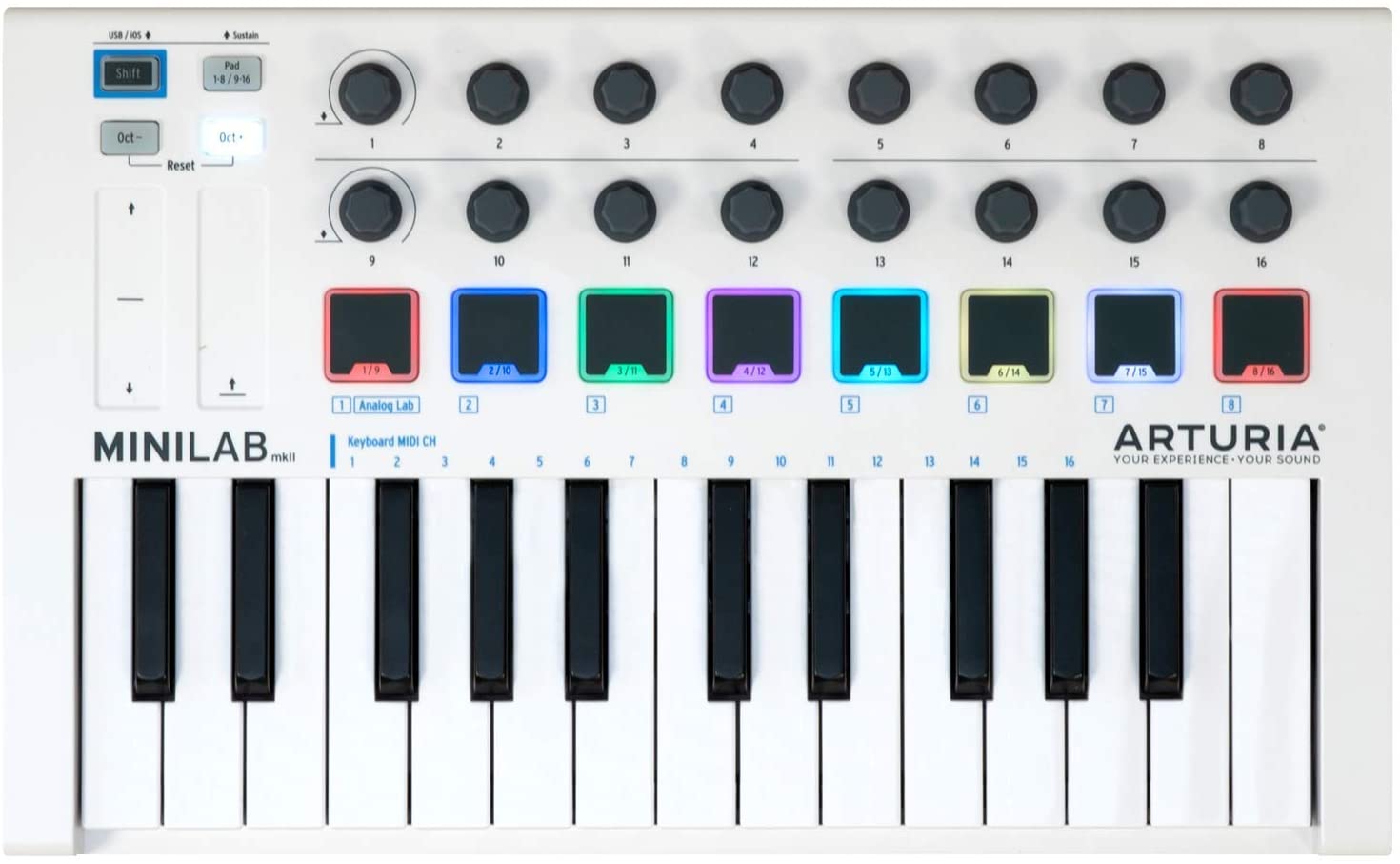
If you’re a fan of the Arturia brand and don’t have the money to spend on the KeyStep Pro, the MiniLab MkII is another option you can try out. The minimal but easy controls are just what a newbie would need to level up their music production skills.
Speaking of controls, there are two touch strips on the top left of the keyboard for pitch bend and modulation. The manufacturer also includes eight RGB backlit pads. Of course, you are at liberty to change the color feedback to something you feel suits your needs.
Additionally, the pads aren’t the only programmable controllers in the device. The 16 knobs/encoders are as well, and you should be able to discover this the more you use the machine alongside your DAW.
Lastly, the 25 keys included are slimmer than normal ones.
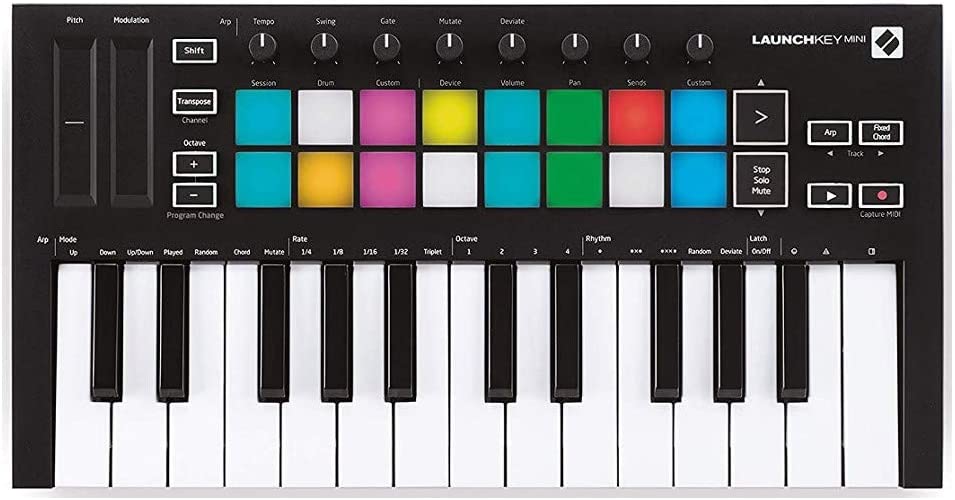
In the Novation product lineup, the Launchkey Mini MK3 is the most compact option where MIDI keyboards are concerned. This is even reflected in the 1.55 lbs weight, which effectively makes it an easier alternative to carry around.
Notably, the machine is in the same price range as the Arturia MiniLab and the Nektar IMPACT LX25. As such, it should be competing with the two devices for a share of the same market.
You may also have noticed the similarity in the number of keys, action type, and sensitivity between this pick and the MiniLab. However, the Novation does have more pads.
Just like the other USB MIDI keyboard pads, the ones on this device come RGB illuminated, which is excellent if you want direct feedback while using the device. There should also be modulation and pitch bend touch strips which is yet another feature shared with the MiniLab.
Also, inclusive of the pads, knobs, and buttons, most of the controls on the device have at least two functions. This does expand your music creation capabilities if you decide this is the device for you.
The reviews of the products mentioned above reveal subtle variations in design that could mean a world of difference when using the machines. The prices also vary from low to relatively high, although some might say that all products listed are relatively affordable. This is in comparison to other larger MIDI keyboards. However, you should still want to get the best value for your money, and a buying guide gives you pointers on how to bring that to fruition.
As most of you will be new to MIDI keyboards, you may not have settled on what criteria to use to choose a device for purchase. However, first, decide on a budget as that will sometimes help you to limit your options to a reasonable number. Look into your bank account and see what you can afford.
With more options, you’ll be more confused, and it can make the selection process a lot harder. After that, the features play the next significant role. Since they dictate what the machine can and cannot do, the features are arguably the most critical aspect of selecting a MIDI keyboard. Consequently, we delve deeper into them in the sections below.
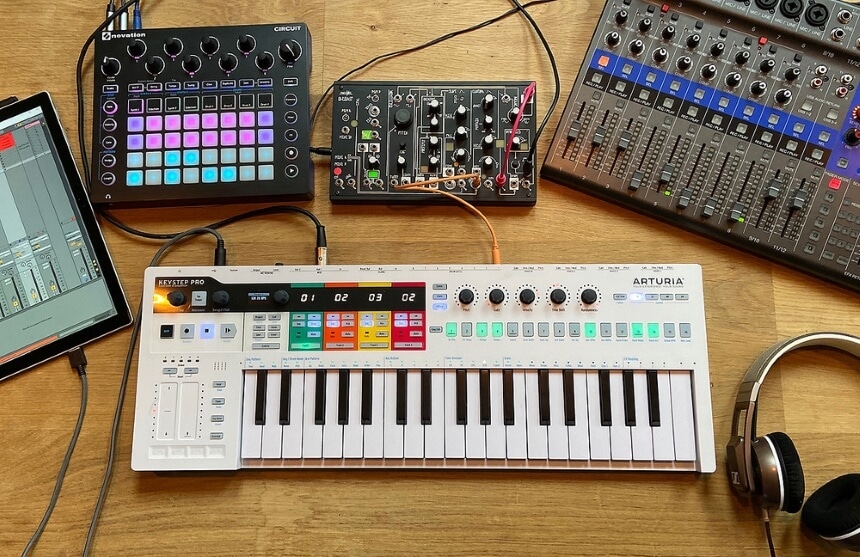
Digital keyboards and pianos have more expressive capabilities for the artist the more keys they have. This is no different for the MIDI keyboard. For this reason, the Akai Professional MPK249 and Alesis V49 stand slightly above the other options reviewed.
However, key quantity is not the only criteria to judge their quality. The size and action of the keys also play a role. Some are full-size according to the standards set by acoustic pianos, while others are mini or slimmer by comparison. The former is easier to play, and there’s no transition when moving to other keyboards or pianos.
Smaller keys make for more portable devices, which can be another pro as well. On the other hand, action basically describes the feel of using the keyboard and key responsiveness. There are synth-action keys, weighted and semi-weighted options.
Furthermore, velocity and aftertouch sensitivity are considered positives for any type of keyboard. You can pick the type that suits you best so long as you have a sufficient budget.
The point of this write-up was to give you a couple of MIDI keyboard options that are compatible with the GarageBand DAW. However, that doesn’t mean the capabilities of the device have to end there. It should at least be compatible with other DAW types, including Ableton Live, Studio One, FL Studio, and more. Check for that before purchase, just in case you need it in the future. You never know when you might choose to switch to the Windows platform.
The MIDI I/O ports are essential to any MIDI keyboard as they transmit musical data from the machine to a computer and other musical devices when needed. Consequently, the more MIDI I/O ports a device has, the more versatile it is. Notably, the Arturia KeyStep Pro is clearly ahead of the pack in this area.
The use of the MIDI keyboard you buy will also be remarkably impacted by the number and types of controllers you have on the machine. If you opt for one with fewer controllers, the keyboard will seemingly be easier to use since you have fewer buttons and knobs to worry about. Nevertheless, this also means limitations in how the machine can be used.
On the other hand, more controllers mean more functionality, although machine layout may be slightly more complex. Assignable buttons and controllers are other positive aspects you should look for in potential purchases. Remember that if you can use your DAW to change the function of each controller, you end up having a more versatile device.
Besides the GarageBand piece of software that you may already own, manufacturers of MIDI keyboards tend to bundle other software in their machines as well. As mentioned before, Analog Lab, Ableton Live, Bitwig, and more can help make your music production easier.
Consequently, if you get an option with more software like the Novation Launchkey Mini MK3, you’ll be better off for it. However, consider the types of software included, as well since they are rated differently in music circles. This is due to their varying functionalities and differences in ease of use.
Also, checking the OS requirements of your MIDI keyboard controller pre-purchase is highly advised. Remember that you’ll likely have to link your computer with the device before you can use it fully. As such, you don’t want to find out the machines are incompatible when it’s too late to do anything about it.
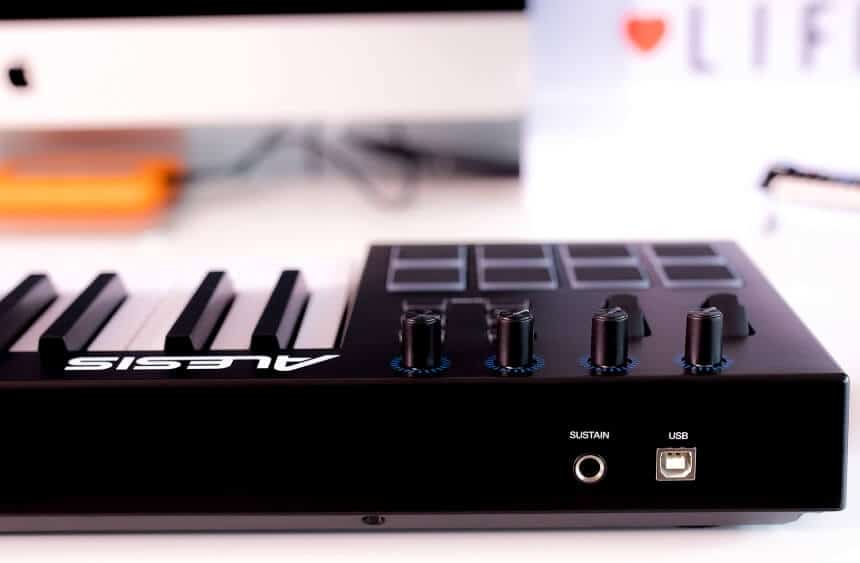
Worth mentioning is that USB-powered MIDI keyboards mean you have fewer wires and cables to worry about. This can make the organization of your studio easier.
The dimensions and weight that you pick in your MIDI keyboard are a matter of preference and need. As mentioned in our review of the Nektar IMPACT LX25+, less real estate on the machine due to a small body would mean either the controls are fewer and more cramped. None of these is ideal as they’ll limit the functionality or make the tool stressful to use.
However, compact devices may still be worth purchasing since they are easy to carry. Of course, larger devices tend to have more capabilities, better key designs, and better spacing for their controls which means they have their upsides as well. That said, taking them from point A to B is usually stressful.
The only variance between MIDI keyboards and other MIDI devices is the keyboard style of their design where they have piano keys. Notably, the MIDI I/O connections we mentioned severally in the write-up are what these machines use to transmit the MIDI signals to the connected devices.
To use them with a computer, you need a DAW such as GarageBand, Ableton Live, and more. There is, however, a variation of MIDI keyboards that come with inbuilt sound modules. These tend to be more expensive, and there is none on the list of options mentioned above. That said, they don’t need an external connection to generate sounds whenever the keys and controls are pressed.
MIDI keyboards may be worth spending some money on if you’re serious about music. Start with an affordable beginner model like some of the options mentioned above, and if the cost is worth it, upgrade to one that costs hundreds or thousands of dollars.
However, as with most software options, there is a workaround that may or may not work for you. It includes downloading an iOS emulator and installing it on your computer. If it works, it should allow you to install and run all iOS apps, incuding GarageBand.
We, however, don’t recommend this since there are other DAWs that are just as effective in Windows 10 computers as they are on macOS devices. Some even come free with the purchase of your MIDI keyboard, as is evidenced above.
Our top recommendation is the Akai Professional MPK249, and true to its name, it is one of the more professional devices listed. The key design was one of the perks of getting this model, in addition to the controls mentioned. If you get this, you might not need to upgrade for a long time.
Second on our list of top usb midi keyboards for GarageBand is the Arturia KeyStep Pro. Arturia is a well-recognized brand, and its offerings have received praise for years. The sequencing capabilities of the tool may be its most impressive aspect.
Lastly, people who prefer MIDI keyboards over other MIDI devices probably like them due to their key designs. As such, this would make the Alesis V49 quite desirable hence its position as our third favorite. Remember to experiment with other DAWs when using these machines so you can be a better musician. No need to limit yourself by using just one.